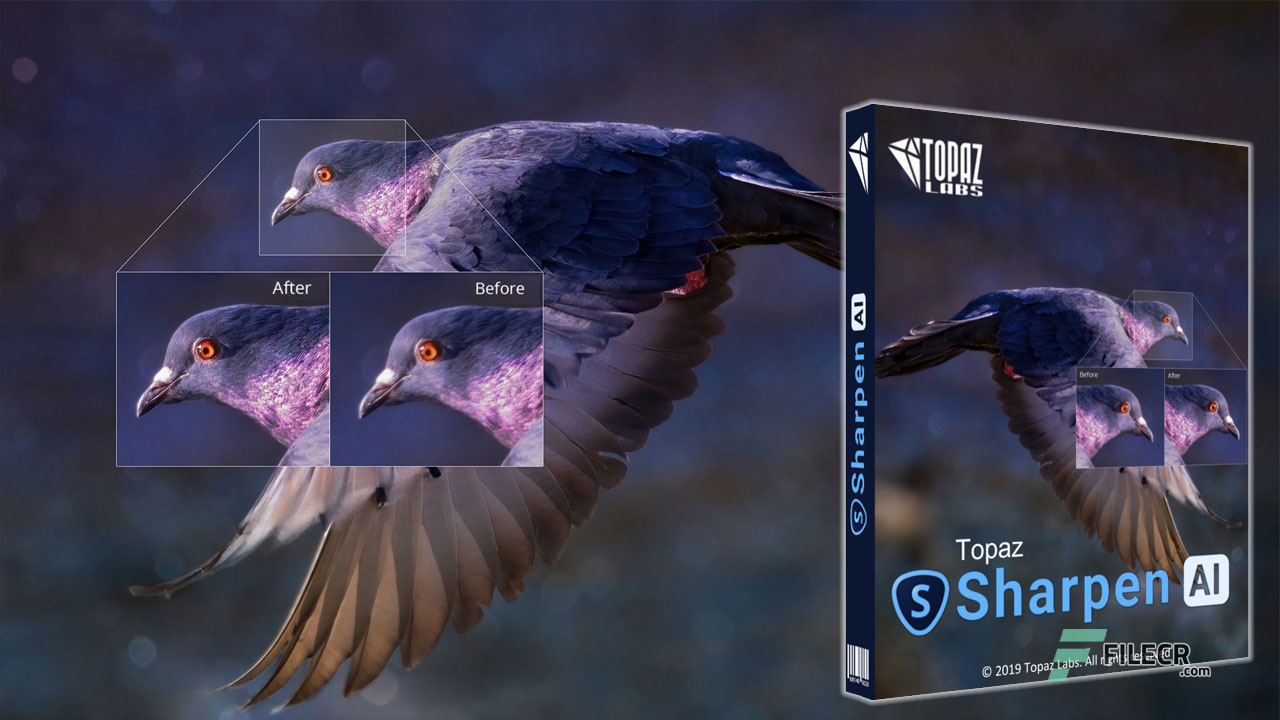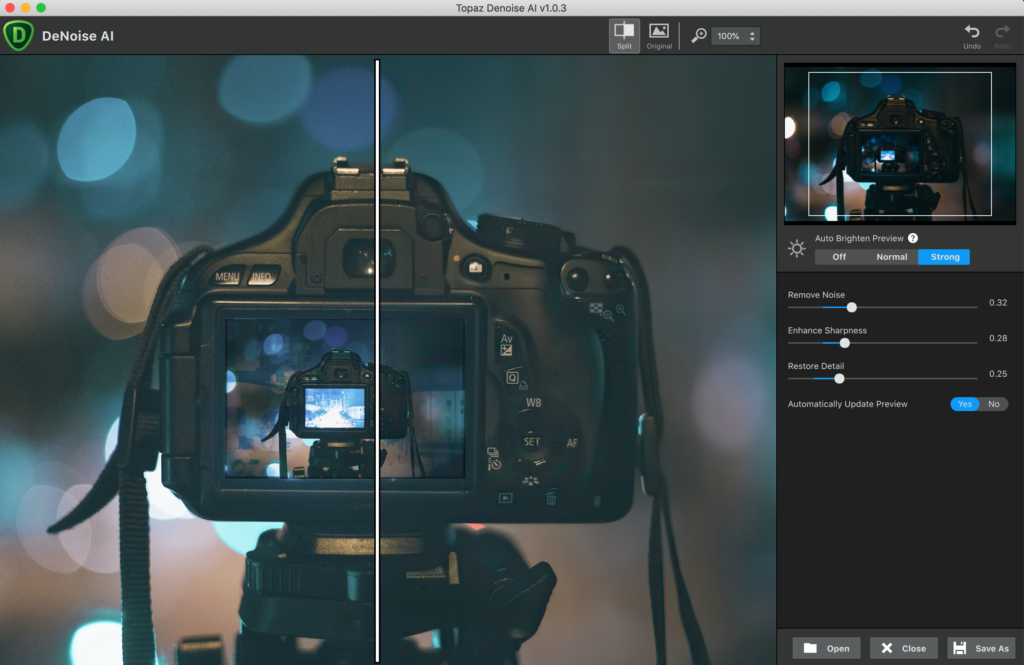

I have used it several times on noisy H-alpha data without using the sharpening function, and the results are magnificent.
#TOPAZ DENOISE AI BEFORE SHARPEN AI SOFTWARE#
The software can also be used responsibly for noise reduction, and I have to say that yes, it is utterly fantastic, and I bought Topaz AI myself.

In deep sky photography, one can take two hours of integration time and make it look like 20, or create Hubble-like details that may or may not actually be present. Imagine creating some fake details on Mercury or Neptune so you can win a photo award with your 8" SCT. The potential for AI abuse in planetary imaging is astounding. Dwell on that thought for a minute, and ask yourself if you'd feel good about using this software if it comes to that. If Topaz hypothetically added some Hubble data to their training set, so the software recognizes familiar DSOs when it sees them, then using Topaz would become equivalent to using Hubble data to enhance your own image. It's adding detail based on its best guess of what the object should look like. In other words, it's not sharpening your actual data. Briefly, Topaz uses a database of millions of images for "training," in order to guess what details were present in your astrophoto before blurring and noise obscured them. I like Topaz AI for its noise reduction abilities, but its potential to create "fake" detail where there is none is quickly garnering a bad reputation in astrophotography. I'll likely have to experiment with this a lot more and see how things I'll likely have to experiment with this a lot more and see how things turn out. This seems, in general, to provide better results than deconvolution.

I do like the additional detail for the most part. But look at the filaments on that dark dust? Why did it make that one set of dust very tendril like, yet leave the other areas mostly untouched? Strange. The tadpoles look fantastic, with increased sharpness and detail. The enhanced nebulosity is quite nice, but what's happening with that dark dust? How did it pull out that detail? The first example here is the Heart Nebula (click to enlarge). I then stretched them fully in PixInsight, then combined, and ran another pass of Denoise after removing green. On the new images, I processed each channel separately, then used Topaz Denoise AI + sharpness while in grayscale. On both originals, I combined all three channels before maximizing the stretch and saturation. Understand that the before and after were processed very differently. Some of the detail that's been revealed in the newly processed images are astounding, and some of it is quite baffling. So I took the software to the task of reprocessing some of my images. Anyhow, on one of those images I saw a discussion spring up regarding some of the enhanced detail being "made up" by the AI. The new DXO Pure raw seems to be more advanced in this lightroom workflow, this is why I suggested it to you to avoid the TIF with Topaz.I picked up Topaz Denoise AI because I saw a few examples of astro images that seemed to present some truly amazing details. I don’t use photolab 4 a lot because I prefer NIK, ON1 and Luminar AI as lightroom plugins BUT I have learnt that, compared to other plugins it has a better workflow with lightroom, meaning they can in a certain sense share dng and lightroom catalog. I updated my old NIK collection to V3.3 (non destructive in lightroom for one plugin) and considered DXO photolab 4 at same time because I had some nostalgy of the U-points I used in the past in capture NX2. I don’t have the opportunity to travel a lot like you due to my job,įamily reasons and confinement for 1 year so I spend hours to play with theseĪnd help my friends to retouch and boost their pictures… I like to buy tutorials, softwares (topaz, NIK3.3, DXO, ON1, Luminar AI), photoshop panels (F64, TK/Lumenzia, Infinity color grading+B&W) and presets, especially on black friday 🙂


 0 kommentar(er)
0 kommentar(er)
